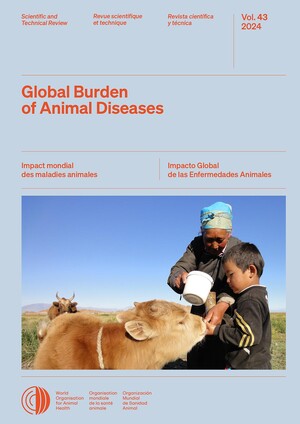
Design and descriptive epidemiology of the Infectious Diseases of East African Livestock (IDEAL) project, a longitudinal calf cohort study in western Kenya
Abstract
There is a widely recognised lack of baseline epidemiological data on the dynamics and impacts of infectious cattle diseases in east Africa. The Infectious Diseases of East African Livestock (IDEAL) project is an epidemiological study of cattle health in western Kenya with the aim of providing baseline epidemiological data, investigating the impact of different infections on key responses such as growth, mortality and morbidity, the additive and/or multiplicative effects of co-infections, and the influence of management and genetic factors.A longitudinal cohort study of newborn calves was conducted in western Kenya between 2007-2009. Calves were randomly selected from all those reported in a 2 stage clustered sampling strategy. Calves were recruited between 3 and 7 days old. A team of veterinarians and animal health assistants carried out 5-weekly, clinical and postmortem visits. Blood and tissue samples were collected in association with all visits and screened using a range of laboratory based diagnostic methods for over 100 different pathogens or infectious exposures.The study followed the 548 calves over the first 51 weeks of life or until death and when they were reported clinically ill. The cohort experienced a high all cause mortality rate of 16% with at least 13% of these due to infectious diseases. Only 307 (6%) of routine visits were classified as clinical episodes, with a further 216 reported by farmers. 54% of calves reached one year without a reported clinical episode. Mortality was mainly to east coast fever, haemonchosis, and heartwater. Over 50 pathogens were detected in this population with exposure to a further 6 viruses and bacteria.The IDEAL study has demonstrated that it is possible to mount population based longitudinal animal studies. The results quantify for the first time in an animal population the high diversity of pathogens a population may have to deal with and the levels of co-infections with key pathogens such as Theileria parva. This study highlights the need to develop new systems based approaches to study pathogens in their natural settings to understand the impacts of co-infections on clinical outcomes and to develop new evidence based interventions that are relevant.
Citation
Bronsvoort, B.M., Thumbi, S.M., Poole, E.J., Kiara, H., Tosas Auguet, O., Handel, I.G., Jennings, A., Conradie, I., Mbole-Kariuki , M.N., Toye, P.G., Hanotte, O., Coetzer, J. and Woolhouse, M.E. 2013. Design and descriptive epidemiology of the Infectious Diseases of East African Livestock (IDEAL) project, a longitudinal calf cohort study in western Kenya. BMC Veterinary Research 9(1): 171.









